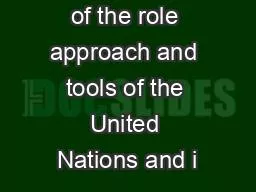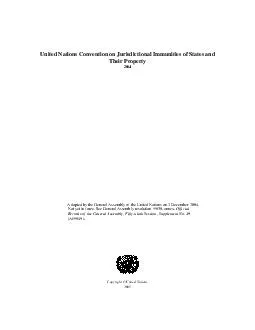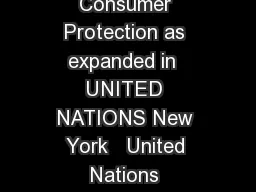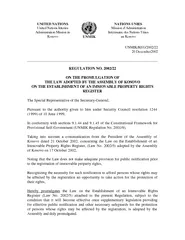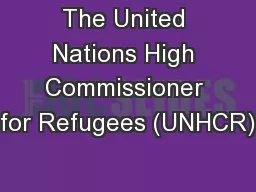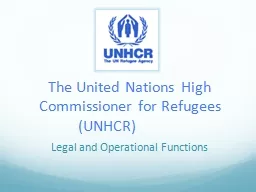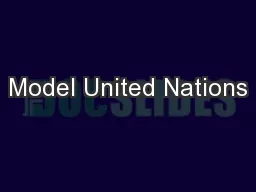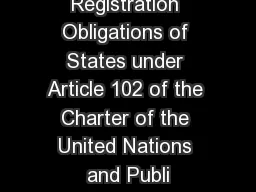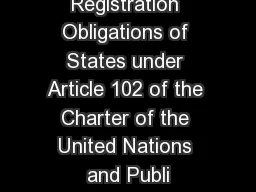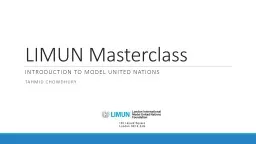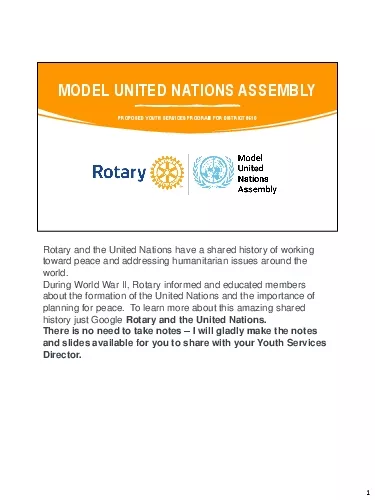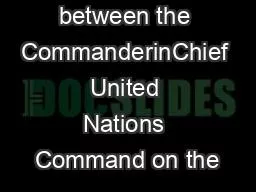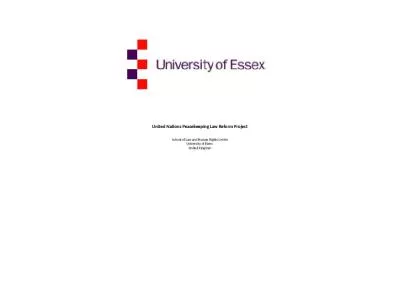PDF-An overview of the role approach and tools of the United Nations and i
Author : jacey | Published Date : 2021-10-03
United Nations Conflict Prevention and Preventive Diplomacy COVERInternational Peace Day celebration at the UN Mission in Colombia headquarters in Bogot Colombia
Presentation Embed Code
Download Presentation
Download Presentation The PPT/PDF document "An overview of the role approach and too..." is the property of its rightful owner. Permission is granted to download and print the materials on this website for personal, non-commercial use only, and to display it on your personal computer provided you do not modify the materials and that you retain all copyright notices contained in the materials. By downloading content from our website, you accept the terms of this agreement.
An overview of the role approach and tools of the United Nations and i: Transcript
Download Rules Of Document
"An overview of the role approach and tools of the United Nations and i"The content belongs to its owner. You may download and print it for personal use, without modification, and keep all copyright notices. By downloading, you agree to these terms.
Related Documents

